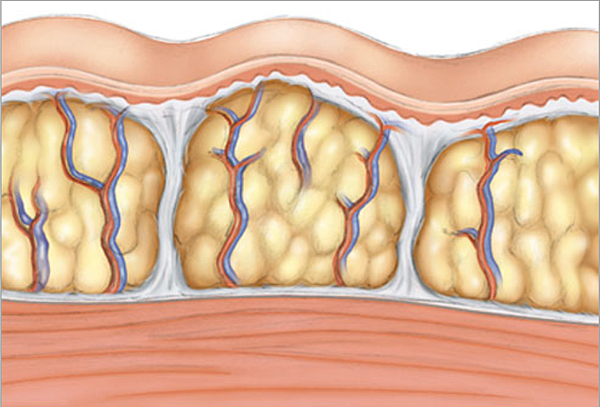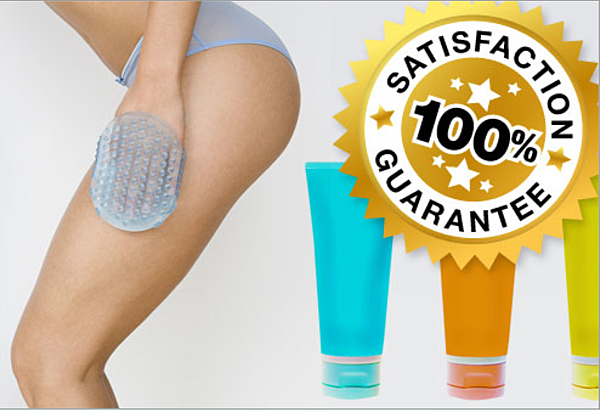The Search for a Cellulite Fix
Cellulite gives a dimpled or lumpy look to the skin, usually on the thighs, abdomen, or buttocks in women -- and for some of us, it's an obsession. We'd like for these tiny lumps of fat to melt away. And we're willing to try almost anything -- creams, massage, lasers, and more. Browse the pictures ahead for WebMD's guide to cellulite -- who gets it, which remedies work, and what's a waste of money.
Signs of Cellulite
Cellulite is purely a cosmetic problem, not an illness or medical condition. It can look like faint dimples or an "orange peel" texture, and may be seen only when the skin is pressed. But for some people cellulite can be very conspicuous, forming large areas of lumpy skin, deep dimples, and creases. While it's most common on the thighs and backside, it occurs on the abdomen, upper arms, and breasts, too.
Causes of Cellulite
Cellulite is caused by fat deposits that sit side-by-side with tough collagen fibers that are anchored to the muscle beneath. When the fibers pull tight, or the fatty areas grow larger, the fat deposits may bulge out. Cellulite is much more common in women than in men.
Myth: Skinny People Don't Have Cellulite
Cellulite is related to the structures within the skin, so even slender women are likely to have some cellulite. And if thin skin runs in your family, the cellulite you have will be more visible
Risk Factors You Can't Control
Genetics is destiny when it comes to cellulite. If your mother has cellulite, you probably will, too. White women are more likely to have cellulite than Asian women. Other risk factors include:
- Hormonal changes in pregnancy
- Aging
Risk Factors You Can Control
Although you can't completely prevent cellulite, your lifestyle choices may affect its appearance. Factors that worsen the condition include:
- Yo-yo dieting
- An excessively high-carbohydrate diet
- An increase in total body fat
- Being inactive
- Fluid retention or being dehydrated
Myth: Tanning Can Hide Cellulite
Tanning may make the cellulite less obvious, but when the tan fades, the cellulite might look even worse. That's because frequent exposure to UV rays can damage the skin, making it thinner and less resilient, according to the International Academy of Cosmetic Dermatology.
Treatment: Weight Loss
If cellulite is caused by fatty deposits, it makes sense that losing weight would be a good strategy. In fact, in a small 2006 study, the appearance of cellulite improved for 17 women enrolled in medically supervised weight loss programs. (The average weight loss was 30 pounds.) However, for nine women, the cellulite actually appeared to worsen, especially if the skin was looser after they lost weight.
Topical: Retinol Cream
One study found that applying a 0.3% retinol cream to the area for six months improved the appearance of cellulite. The theory is that retinol stimulates skin tissues to create thicker skin that better covers the lumps and bumps of cellulite. Other studies have not shown differences in average skin thickness after retinol use.
Topical: Methylxanthine Creams
Some studies suggest improvement in cellulite with the use of creams containing methylxanthines, including caffeine, aminophylline and theophylline, but the extent of improvement is questionable. Other studies show no improvement. These creams are thought to act by breaking down fat, but it's not clear whether enough of the substance penetrates the skin. The American Society for Aesthetic Plastic Surgery warns that scientific proof for aminophylline products is still far in the distance.
Topical: Herbal Creams
Herbal creams containing a variety of ingredients, such as gingko biloba, sweet clover, and evening primrose oil, claim to reduce cellulite, perhaps by affecting circulation. But there aren't any scientific studies to back that up. In fact, one study of 32 anti-cellulite creams contained more than 260 different chemical ingredients. About one-quarter of those ingredients are known to cause allergic reactions in some people
Massage/Suction
Lipomassage devices knead the skin with a combination of massage and suction. Several different machines are in use at Medispas and dermatology practices, and at least one has been approved by the FDA for a temporary reduction in the appearance of cellulite. Generally, the treatment requires 35-minute sessions twice a week for about 14 weeks. The cellulite is likely to return after the treatments stop.
Radiofrequency
Radiofrequency devices deliver heat -- sometimes combined with tissue massage -- to damage the underlying fat and connective tissue. This is designed to spur skin tightening and to smooth out the bulges. Small studies have shown some benefits, at least temporarily.
Laser Devices
Laser devices target the underlying connective tissue to build collagen and thicken the skin. They may also apply massage, suction, cooling, and/or radiofrequency to hit cellulite with 3-4 different methods at once. Some small studies have shown some benefits, at least temporarily.
Liposuction
Standard liposuction techniques could actually lead to more skin dimpling, because the fat that causes cellulite lies close to the surface of the skin. Laser-assisted liposuction, with short pulses of high power, has been used to destroy and remove fat under the skin. However, it's too soon to say if the results will be better than with traditional liposuction. There is a risk of scarring and burns from the laser treatment.
Subcision
In this invasive technique, a needle is used to snip the connective tissue beneath the skin that is causing the fat deposits to bulge. The long-term results aren't clear, and the procedure's effectiveness needs to be validated in scientific studies. The treatment is expensive ($3,500 to $4,000), takes about 90 minutes, and can cause some temporary swelling and bruising.
Mesotherapy
This controversial and unapproved procedure involves injections of fat-dissolving substances beneath the skin, such as phosphatidylcholine, which is a lecithin extract, and sodium deoxycholate, a detergent. The FDA has issued warnings related to "lipodissolve" products. Side effects include swelling, rash, or infection. The FDA says some products have caused "permanent scarring, skin deformation, and painful knots."
Body Wraps
Being wrapped in warm, aromatic, "slenderizing" bandages may feel good. It may even temporarily tighten skin or reduce inches through dehydration. But there's no scientific evidence that body wraps have a lasting effect on cellulite or fat, and the Federal Trade Commission has warned body-wrapping firms not to promise the selective reduction of fat in one part of the body.
The Cellulite 'Cure'
You may be able to minimize your cellulite through lifestyle changes and even products or procedures, but beware of promises to "rid" you of cellulite. The FDA and Federal Trade Commission have forced some companies to stop making such claims. Most treatments at best can improve the appearance of cellulite -- while you use them.
The Bottom Line: A Healthy Lifestyle
Diet and exercise won't get rid of cellulite, but they can improve your skin and muscle tone. A combination of strength training and aerobic exercise, such as jogging or walking, can build muscle and burn fat. Staying hydrated and avoiding a high-carbohydrate diet also can help.

























 留言列表
留言列表
 線上藥物查詢
線上藥物查詢 